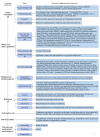Impact of Chemicals and Processing Treatments on Thermo-Mechanical Recycling of Polyester Textiles
- PMID: 40649276
- PMCID: PMC12250887
- DOI: 10.3390/molecules30132758
Impact of Chemicals and Processing Treatments on Thermo-Mechanical Recycling of Polyester Textiles
Abstract
The textile industry is among the world's largest, producing an estimated 124 million tonnes of fibres in 2023, with more than half of these being made from virgin polyester. Less than 0.1% of polyester fibres are recycled into new textiles at the end of their lives. Mechanical, thermo-mechanical, and chemical textile-to-textile polyester recycling are all technically possible, but thermo-mechanical recycling is reported to provide the most promising compromise between cost and quality. Myriad chemicals are used in polyester production, and this paper is the first to review the related academic literature to better understand their impact on recyclability. It has been demonstrated that chemicals used during the production and processing of polyester textiles can either provide resistance to, or catalyse, the degradation of polyester during thermo-mechanical recycling processes. However, the effect of combinations of these chemicals on recycling is largely unknown. Limiting, standardising, and transparently reporting the chemicals used during textile production would simplify research and could lead to better quality products after recycling.
Keywords: circular fashion; contamination; degradation; fiber to fiber recycling; fibre to fibre recycling; mechanical recycling; polyester textile waste; sustainability; textile to textile recycling.
Conflict of interest statement
The authors declare no conflicts of interest.
Figures







References
-
- Niinimäki K., Peters G., Dahlbo H., Perry P., Rissanen T., Gwilt A. The environmental price of fast fashion. Nat. Rev. Earth Environ. 2020;1:189–200. doi: 10.1038/s43017-020-0039-9. - DOI
-
- Le K. Textile Recycling Technologies, Colouring and Finishing Methods. The University of British Columbia; Vancouver, BC, Canada: 2018. pp. 23–50. Solid Waste Services.
-
- Hayes L.L. Synthetic textile innovations: Polyester fiber-to-fiber recycling for the advancement of sustainability. AATCC Rev. 2011;11:37–41.
-
- Candido R.G. 17—Recycling of textiles and its economic aspects. In: Mondal M.I.H., editor. Fundamentals of Natural Fibres and Textiles. Woodhead Publishing; London, UK: 2021. pp. 599–624.
-
- Juanga-Labayen J.P., Labayen I.V., Yuan Q. A Review on Textile Recycling Practices and Challenges. Textiles. 2022;2:174–188. doi: 10.3390/textiles2010010. - DOI
Publication types
LinkOut - more resources
Full Text Sources

